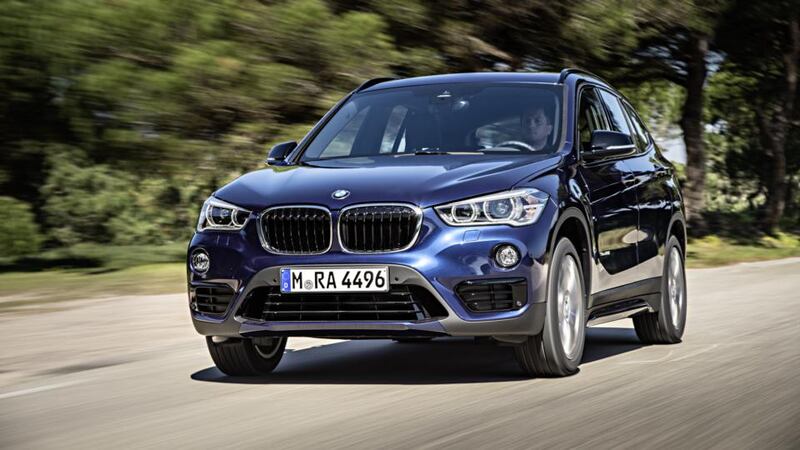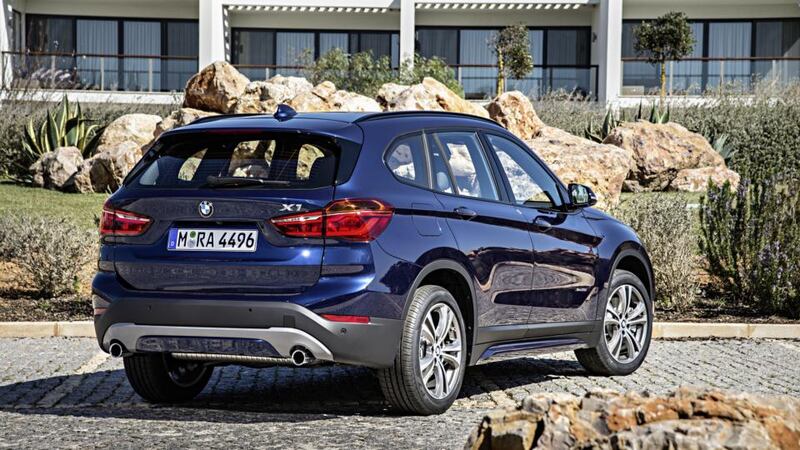BMW is promising more space, more power, better fuel economy and better interior quality out of its all-new baby crossover SUV.
Big chunks of the second generation X1 are already well understood, even before BMW sets it up to chase down the 730,000 sales of the first.
That’s because it’s based on the BMW Group’s front-drive architecture, which has already been seen on the current MINI three- and five-door hatch and the BMW 2-Series Active Tourer and Gran Tourer.


There will be front- and all-wheel drive X1s, too, with BMW taking advantage of the lower cost and greater flexibility of the chassis architecture to give a broader range of choices.
Two petrol and three diesel four-cylinder engines will headline the X1 show when it launches in Europe in October, with the best of them dropping its fuel consumption to 4.1 litres/100km, while even the thirstiest engine still scores a figure of 6.4 litres/100km. That equates to a CO2 emissions range of 109 to 149 grams/km.
All members of the new modular family of BMW engines, they share their architectures with the MINI engines sitting across the engine bay, to deliver a shorter nose than its predecessor.
Even the most economical of the 2-litre units still manages 110kW of power, while the range-topper hits 170kW and is essentially the same motor as MINI uses for the John Cooper Works hot hatch.
The same engine, slightly detuned, powers the 141kW xDrive20i. It has a lower torque peak of 280Nm, which pushes its 0-100km/h time out to 7.4 seconds, while the front-drive version (the sDrive20i) takes 0.3 seconds longer.
Irish buyers
Of more interest to Irish buyers will be the xDrive20d, with 140kW and 400Nm (7.6 seconds, 4.9 litres/100km) and an sDrive18d (110kW and 330Nm).
The standard gearbox is a six-speed manual, while all of the engines can mate up with an optional eight-speed automatic transmission, which is also used with the Active and Gran Tourers.
Taking lessons from the last generation of EfficientDynamics editions at BMW, the X1’s manual gearbox uses a centrifugal pendulum absorber in its dual-mass flywheel, which smooths out vibrations and lets the car cruise at exceptionally low engine speeds without discomfort.
In a layout already seen in the Active and Gran Tourers, the entry-level of the X1 range now features an sDrive20i and sDrive18d, both of which are front-wheel drive only, and happen to head the badges fuel-economy and lightweight tables.
The all-wheel drive system is an on-demand setup, derived from MINI's engineering programme, much to the surprise of people who think it's all one-way technical traffic from Germany to Oxfordshire.
Multi-plate
clutch The multi-plate clutch, which distributes torque between the front and rear ends, is marshalled electro-hydraulically and is infinitely adjustable, depending on the level of grip available. And, of course, what the stability control system tells it to do – and it is set up to do this pre-emptively.
Effectively, the powertrain is a front-drive system with a power takeoff unit. BMW attaches a two-piece prop shaft to it and shoots that down to the rear differential, except it sticks the electro-hydraulically actuated clutch pack in between the front and the rear ends.
Besides deciding when to shift and share the power between the car’s differentials, the stability control (DSC in BMW speak) is also in charge of the hill descent control.
Beneath the skin, its architecture is a combination of a multi-link rear suspension and a strut-governed front end that uses plenty of aluminium and high-strength steels for added rigidity.
Then it adds an electro-hydraulic steering setup that saves fuel and allows the steering to easily be accommodated in the range of different driving setups the X1 delivers, especially relevant with its optional variable damper system.
The standard wheels are 17-inch alloys, though 18- and 19-inch versions are both optional.
Bigger inside
People will be fixated on its looks, but the day-to-day reality of the X1 is that it is bigger inside in every key dimension, and BMW has lifted the roof height 53mm to ensure everybody understands it.
It’s a slightly bigger car, stretching along 4,439mm and across 1,821mm, while it’s now 1,598mm tall. It rides on a 2,670mm wheelbase, which is midway between the 2-Series Active Tourer and the 2-Series Gran Tourer.
It has also raised the seat heights in every position to give a greater SUV-style high-driving position.
The X1 had limited sales appeal in Ireland, but it’s hoped this new version will catch the eye of newcomers to the brand. It’s all part of an aggressive product expansion plan by the German brand, keeping pace with arch-rival Audi.
The consequences of this battle of the premium brands and their expansion into new markets, particularly smaller cars, is proving to be a growing problem for more mainstream brands who are losing out at the upper end of their customer base, where higher margins reside.










